Image

A hike up the Safari Park’s Garden Trail rewards you with some of the best vistas in the county. The view of the San Pasqual Valley and the African Plains, the soaring turkey vultures, and the daily dramas unfolding in the nearby bighorn habitat make for a compelling backdrop to the unique landscape that recreates a bit of Mexico’s picturesque Baja Peninsula.
[caption id="attachment_138480" align="aligncenter" width="1400"]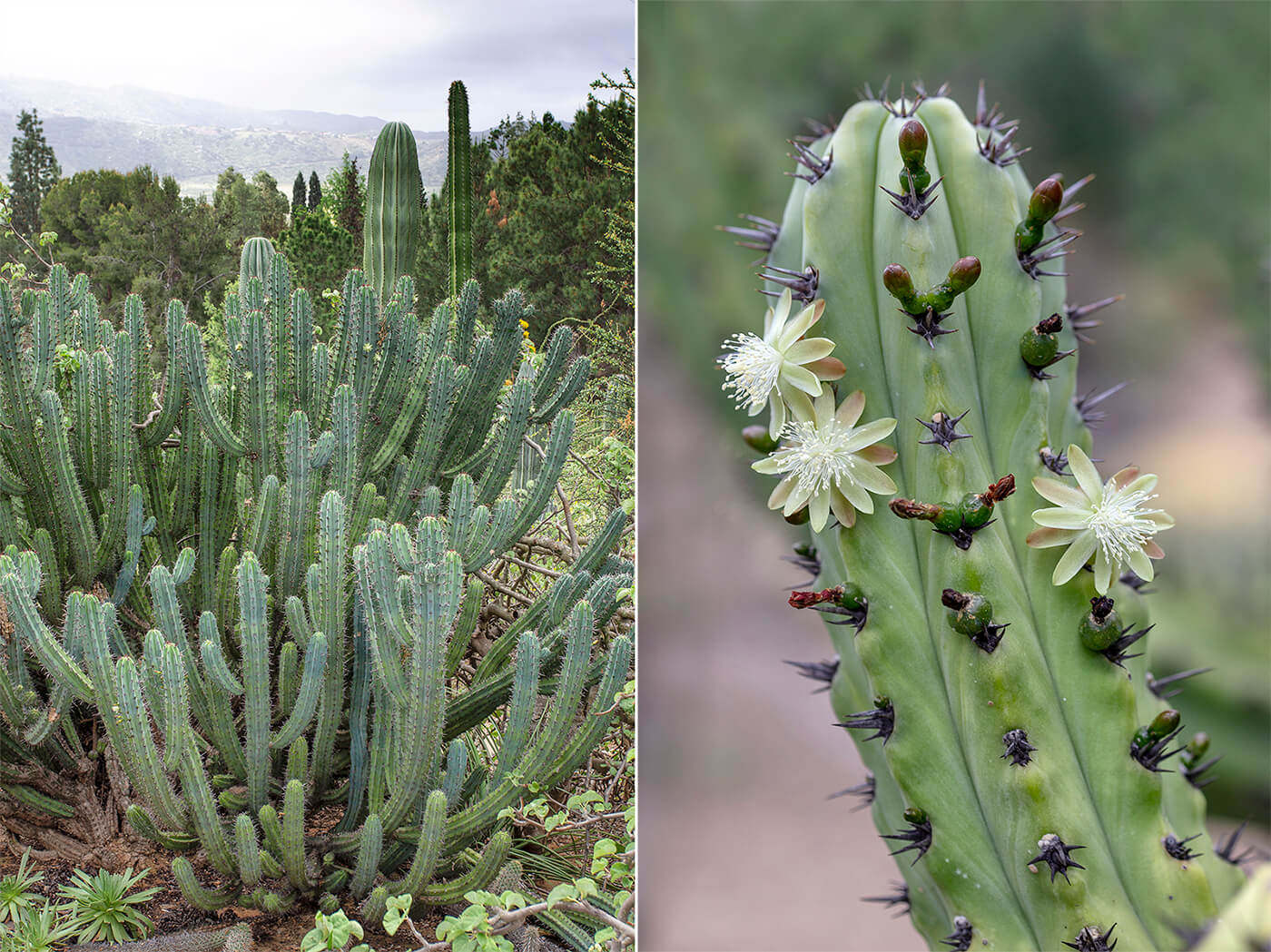 BAJA CACTUS
BAJA CACTUS
Candelabra cactuses in the Safari Park’s Baja Garden can grow to more than six feet tall. This Baja California native sprouts small greenish blossoms that attract hummingbirds and other pollinators.[/caption] The Safari Park’s Baja Garden is the largest collection of plant material from Baja California, outside of Baja. In fact, most of the species here don’t grow anywhere except Baja California. Specimens in the Park’s collection are particularly valuable from a horticultural perspective, because they were field collected. Jim Gibbons, former Safari Park curator of horticulture, conceptualized the Baja Garden and led numerous plant collecting expeditions deep into the Baja Peninsula. In the 1980s, horticulturists from the Safari Park obtained permits to collect boojums, cardóns, barrel cactuses, agaves, yuccas, and other Baja natives, importing them across the border to create our accurate representation. The fact that the Mexican government no longer grants the necessary collection permits makes this spot at the Park all the more special. [caption id="attachment_138479" align="aligncenter" width="2400"]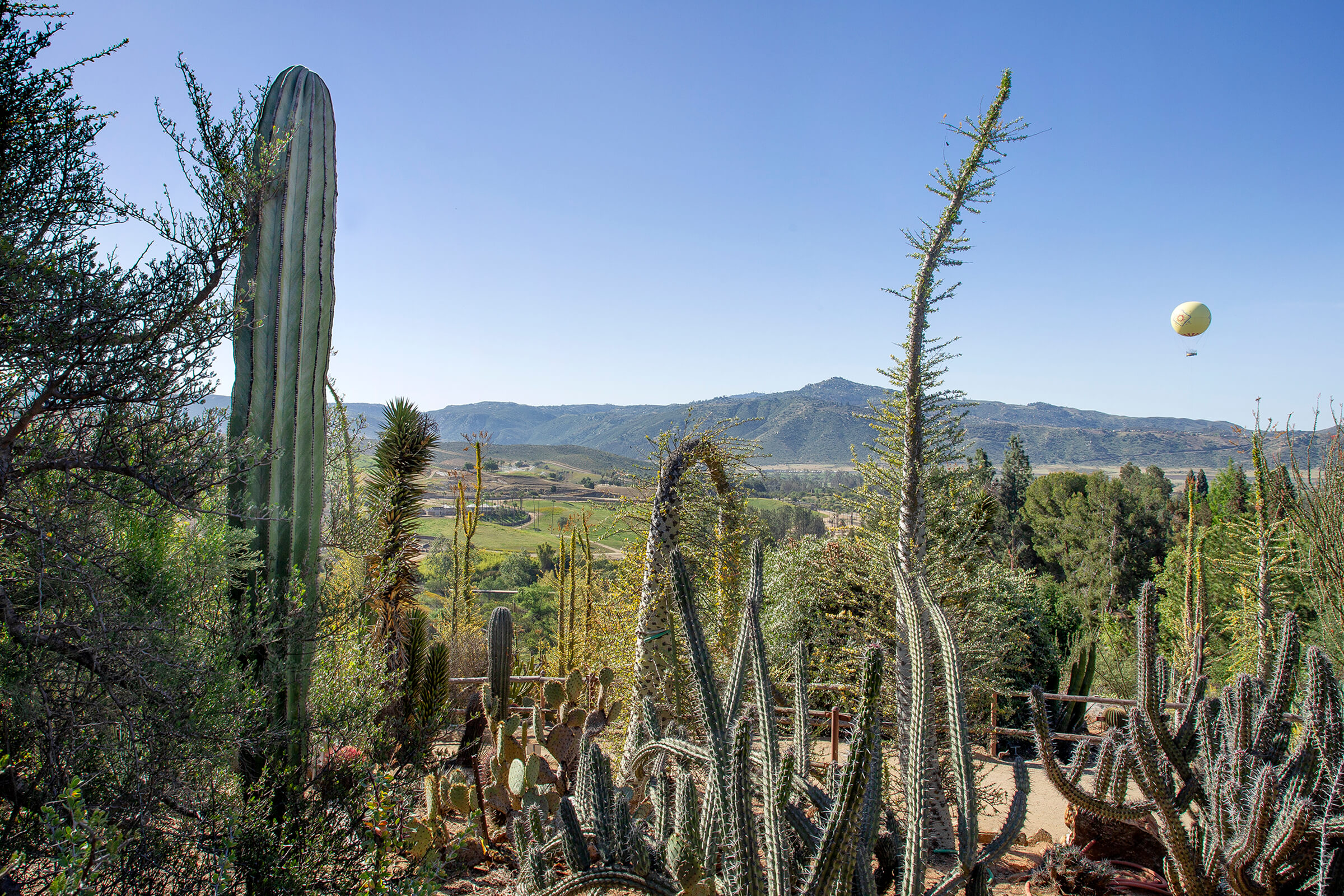 BAJA AND BEYOND
BAJA AND BEYOND
The Safari Park’s Baja Garden gives visitors rare look at the plant life of Mexico’s Baja California Peninsula. It also offers breathtaking views of the Safari Park savannas and the San Pasqual Valley.[/caption] Chip Avalos, Safari Park horticulturist, was a member of the team that visited Baja to collect plants over a 10-year period, in the 1980s. “I’ve been around deserts in California and Arizona, but down there—it was like another planet,” he recalls. “The landscape was awesome.” Another team member, Safari Park arborist Javier Quiroz, remembers collecting elephant trees Bursera microphylla (shown below) near Cataviña, a small town on Carretera Federal 1 (Federal Highway 1). “We hiked into areas where we found pools of water among the rocks,” he says. “It was beautiful.” Just 17 years old when he made his first collecting trip, Javier had to bring along a permission slip from his parents, so that he could cross the border to participate. “In those days, it was just a letter that my parents signed,” he says.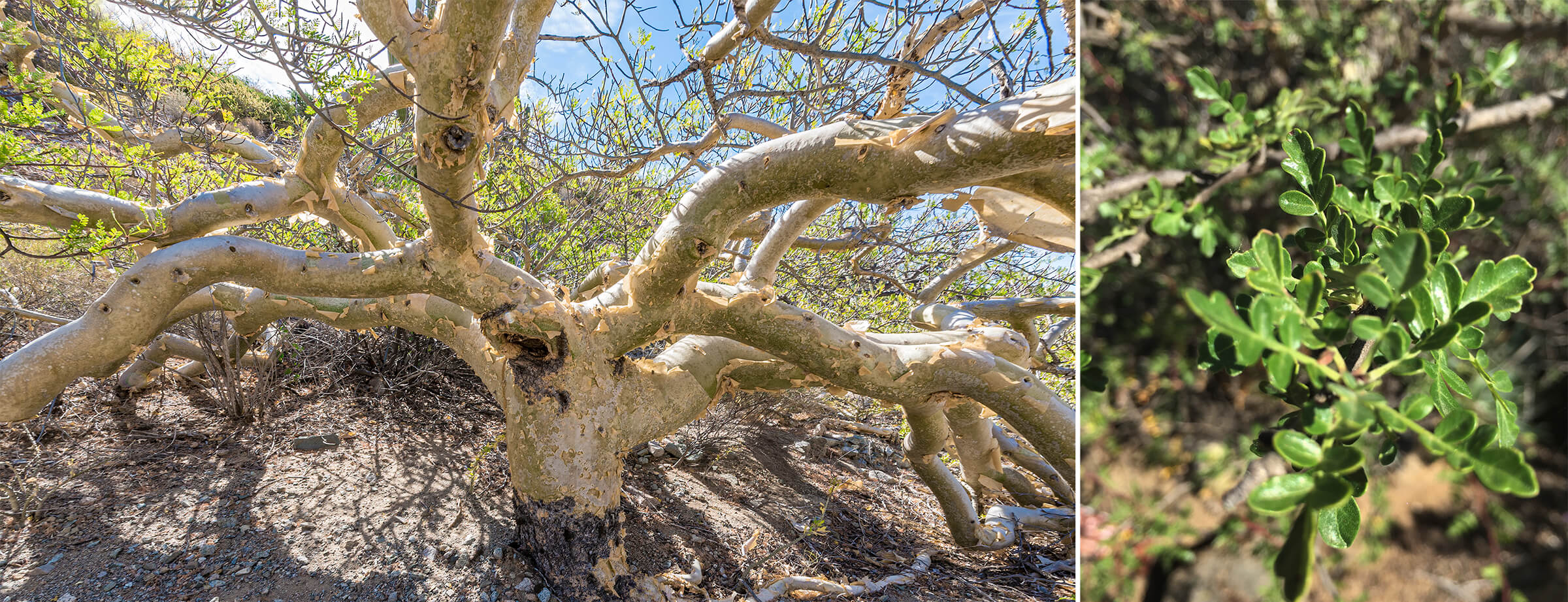
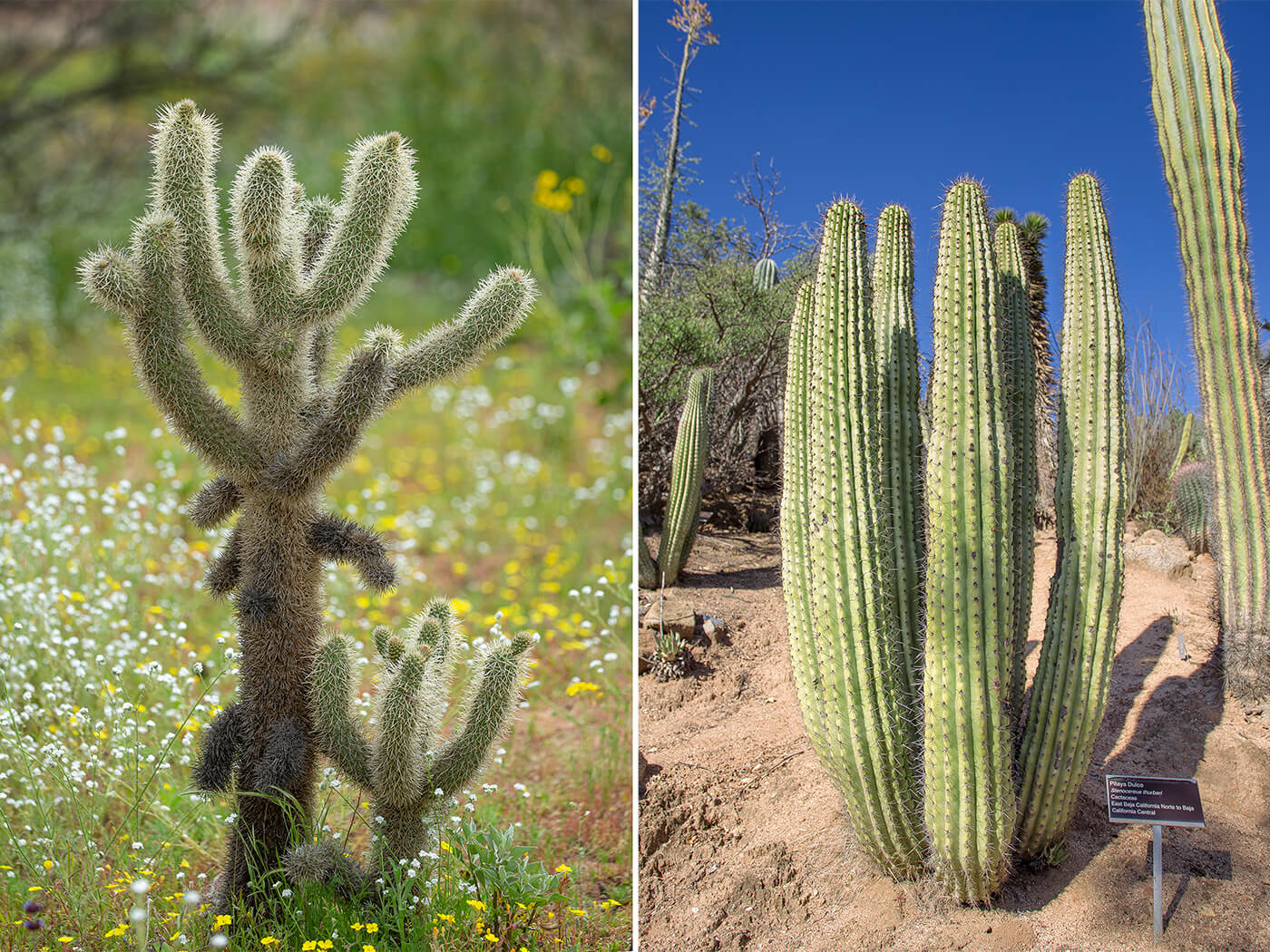 CACTUS COUNTRY
CACTUS COUNTRY
Look for these at the Safari Park’s Baja Garden: cholla (left) and Pitaya dulce (right).[/caption] Not all Baja natives are cactuses, of course. The Baja Garden is home to 132 species of plants, such as the agaves that bloom spectacularly, with a thick spire of flowers rising from the center of the rosette. When the flower stalk dies, the parent plant dies, too—but not before sprouting new “pups” around its base. You’ll also find other, much smaller, rosettes—specimens of various Dudleya species (also known as “liveforevers” or in Spanish, siempravivas). Unlike the central stalk of the agave, a Dudleya flower stalk emerges from somewhere near the base of the plant, not the center of the rosette. Although California has Dudleya species of its own, the ones in the Park’s garden are unique to Baja California. [caption id="attachment_138483" align="aligncenter" width="2400"]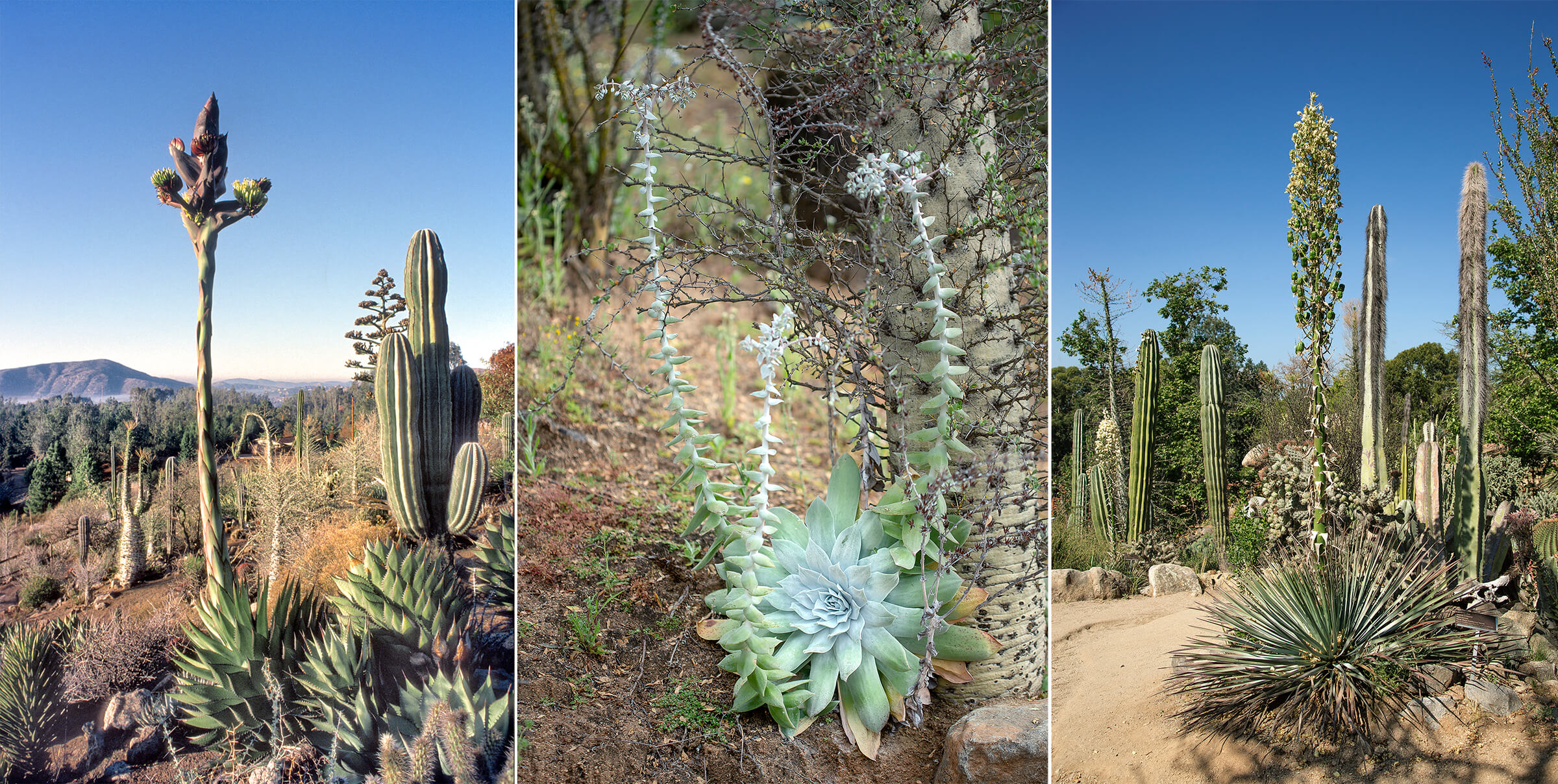 FLOWER STALKS
FLOWER STALKS
These Baja plants grow flowers on long stalks (from left to right): agave, dudleya, and yucca.[/caption] The boojum “tree” Fouquieria columnaris is a Baja Garden standout. It looks a bit like a tall light pole with sparse, short, spiky branches jutting out horizontally. In Mexico, locals call it cirio, the Spanish word for a taper candle, which it resembles when its flame-colored flower stalks burst into bloom. Although it’s related to the more familiar ocotillo F. splendens, the boojum grows only in the mid-third of the rugged Baja Peninsula, where, like many Baja plants, it is drought-deciduous, meaning it drops its leaves during dry spells. [caption id="attachment_138484" align="aligncenter" width="1400"]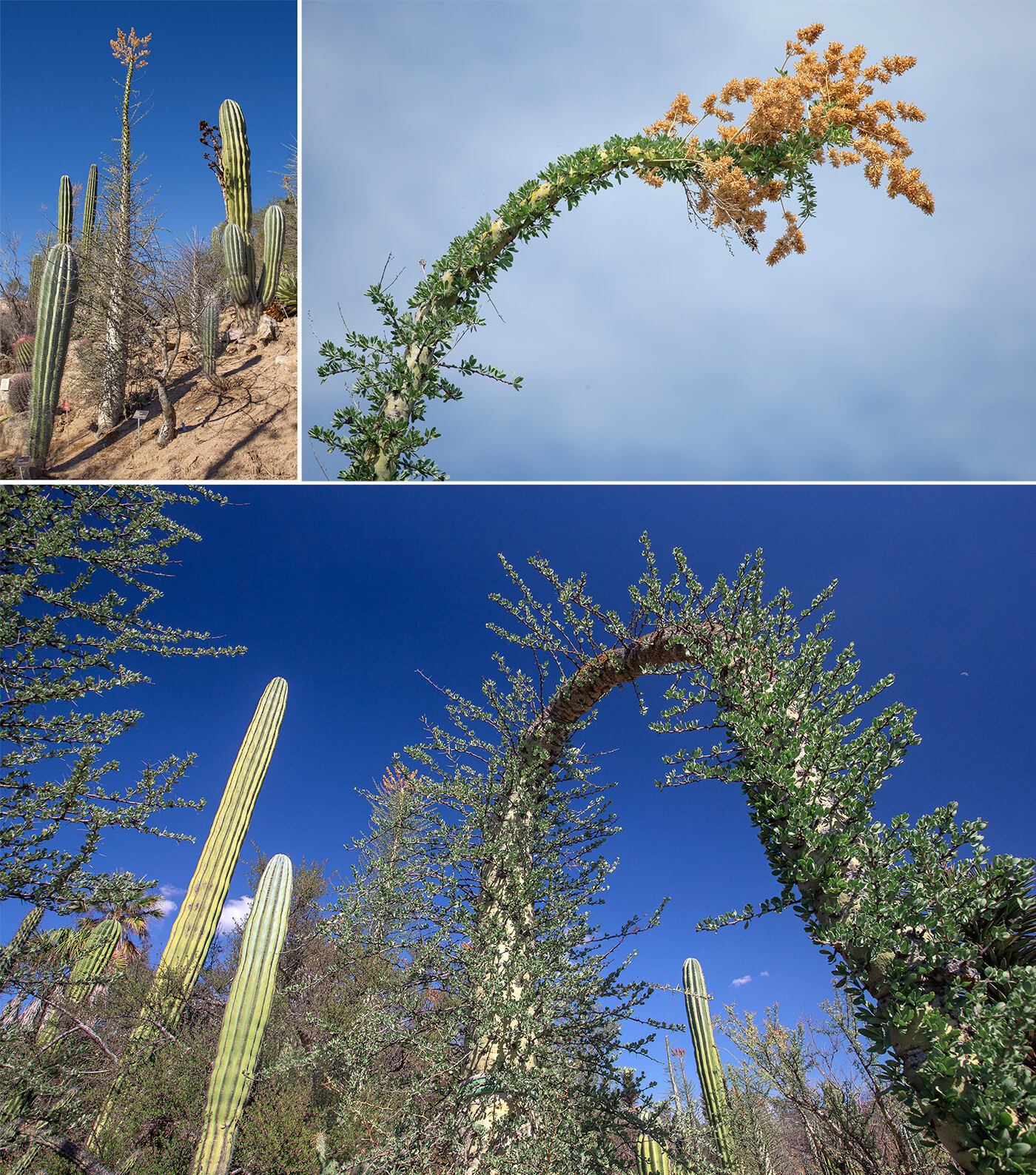 A MOST UNUSUAL “TREE”
A MOST UNUSUAL “TREE”
While most boojums rise tall, some of them, like a few of the specimens in the Baja Garden, bend and twist, almost as if they are moving in slow motion.[/caption] Bringing boojums home to the Safari Park required hours of careful digging to free up a boojum’s long tap root. Horticulturist Danny Castaneda shares a memory from their camp outside of Cataviña, where the distribution of these unique plants starts. “We sat in the dark of the desert night around the fire, with boojums all around us,” he says. “It was otherworldly.” [caption id="attachment_138485" align="aligncenter" width="1400"]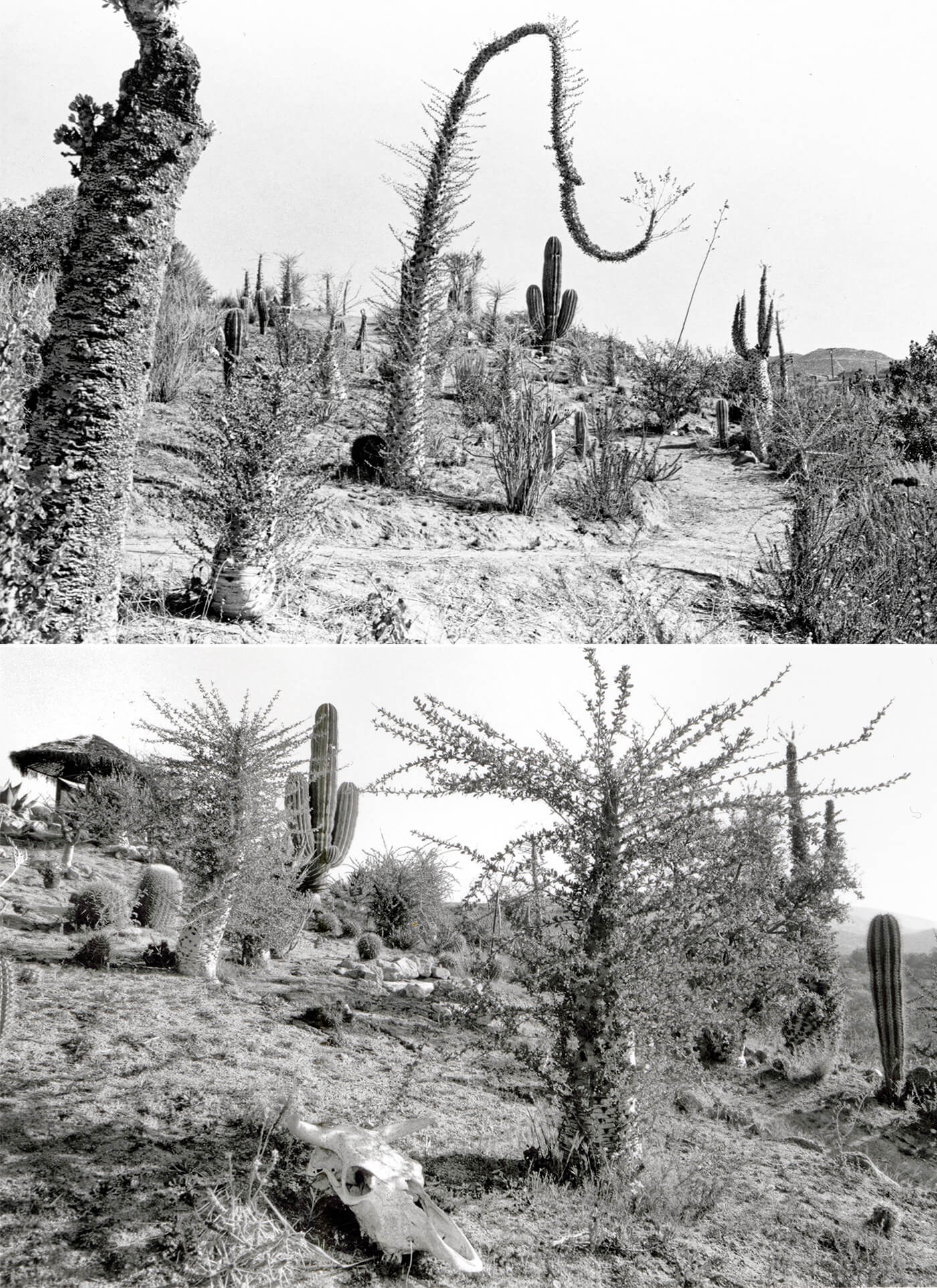 EARLY DAYS
EARLY DAYS
At the Baja Garden, boojums and cactuses captured the spirit of Baja California.[/caption] The horticulturists spent their evenings around the campfire cleaning dirt from the plants’ roots—as per their permits, they weren’t allowed to bring any dirt from Mexico into the US. They wrapped burlap or towels around the roots to keep them from drying out. “When we returned from a collecting trip, we’d spend all week planting the specimens we’d brought back with us,” says Danny, who recalls climbing up and down the garden’s gullies. The Baja Garden was installed before Condor Ridge was built, and Chip remembers taking breaks in the shelter of the large rock formation in the condor habitat. “It was cool and shady in there, and there’s a natural spring inside,” he says. [caption id="attachment_138486" align="aligncenter" width="2400"] THEN AND NOW
THEN AND NOW
The Safari Park horticulture team built the Baja Garden in the 1980s (left). Today, it fulfills the dream of bringing a representation of Baja California to the Safari Park (right).[/caption] Visiting the Baja Garden and seeing the plants they collected, “all grown up” and looking lush and healthy, brings back a flood of memories for these three horticulturists who were part of the original collection team. Chip remembers visiting petroglyphs in the Baja desert, and coming across a shrine “in the middle of nowhere,” on one trip. And Javier still marvels at a church, made from galvanized metal, that he saw in Santa Rosalía. It was designed by Alexander Gustave Eiffel (yep, of Eiffel Tower fame) and originally displayed at the 1889 Paris World Exposition. Today, we’re able to experience a piece of Baja at the Safari Park, thanks to the team that traveled to Baja California 40 years ago and re-created the wilderness they experienced. “It took a lot of grit and determination to create the Baja Garden,” remarked Raj Brown, Safari Park director of horticulture. “It is amazing hearing our team reminisce about their sun-soaked journeys deep into the desert, and the challenges of hauling massive thorny cactuses. I am so appreciative of their efforts, and I am inspired by the magnificent garden they created.” “The nicest part is, we still have three people working here who collected and planted the original garden,” says Chip. Danny and Javier agree. “It’s fantastic; visiting the garden makes me happy,” Danny says. “It’s part of our legacy.”
 BAJA CACTUS
BAJA CACTUSCandelabra cactuses in the Safari Park’s Baja Garden can grow to more than six feet tall. This Baja California native sprouts small greenish blossoms that attract hummingbirds and other pollinators.[/caption] The Safari Park’s Baja Garden is the largest collection of plant material from Baja California, outside of Baja. In fact, most of the species here don’t grow anywhere except Baja California. Specimens in the Park’s collection are particularly valuable from a horticultural perspective, because they were field collected. Jim Gibbons, former Safari Park curator of horticulture, conceptualized the Baja Garden and led numerous plant collecting expeditions deep into the Baja Peninsula. In the 1980s, horticulturists from the Safari Park obtained permits to collect boojums, cardóns, barrel cactuses, agaves, yuccas, and other Baja natives, importing them across the border to create our accurate representation. The fact that the Mexican government no longer grants the necessary collection permits makes this spot at the Park all the more special. [caption id="attachment_138479" align="aligncenter" width="2400"]
 BAJA AND BEYOND
BAJA AND BEYONDThe Safari Park’s Baja Garden gives visitors rare look at the plant life of Mexico’s Baja California Peninsula. It also offers breathtaking views of the Safari Park savannas and the San Pasqual Valley.[/caption] Chip Avalos, Safari Park horticulturist, was a member of the team that visited Baja to collect plants over a 10-year period, in the 1980s. “I’ve been around deserts in California and Arizona, but down there—it was like another planet,” he recalls. “The landscape was awesome.” Another team member, Safari Park arborist Javier Quiroz, remembers collecting elephant trees Bursera microphylla (shown below) near Cataviña, a small town on Carretera Federal 1 (Federal Highway 1). “We hiked into areas where we found pools of water among the rocks,” he says. “It was beautiful.” Just 17 years old when he made his first collecting trip, Javier had to bring along a permission slip from his parents, so that he could cross the border to participate. “In those days, it was just a letter that my parents signed,” he says.

EASIER SAID THAN DONE
The collection team traveled through Baja from the top of the peninsula to the tip, making camp in the desert along the way. Days were spent driving on dirt roads and hiking old trails, marking paths and plants on a map as they explored. They remember a particularly tricky trail near Rosalia, where they had to walk carefully, single-file, to avoid brushing against cactuses such as chollas Cylindropuntia, which are legendary for their ability to sink their hooks into passersby, seemingly “jumping” onto trousers, socks, shoes, and skin. Digging cactus specimens out of the soil was even trickier. First, they wrapped carpet around a cactus, securing it with rope. Then they carefully dug out the roots. For most of the cactuses, they wore two pairs of heavy-duty gloves—and they still suffered some pokes. Most challenging of all were the barrel cactuses Ferocactus and the largest cactus species in the world, the cardón Pachycereus pringlei, which can rise spectacularly to 60 feet and can live for 200 years. [caption id="attachment_138225" align="aligncenter" width="1400"] CACTUS COUNTRY
CACTUS COUNTRYLook for these at the Safari Park’s Baja Garden: cholla (left) and Pitaya dulce (right).[/caption] Not all Baja natives are cactuses, of course. The Baja Garden is home to 132 species of plants, such as the agaves that bloom spectacularly, with a thick spire of flowers rising from the center of the rosette. When the flower stalk dies, the parent plant dies, too—but not before sprouting new “pups” around its base. You’ll also find other, much smaller, rosettes—specimens of various Dudleya species (also known as “liveforevers” or in Spanish, siempravivas). Unlike the central stalk of the agave, a Dudleya flower stalk emerges from somewhere near the base of the plant, not the center of the rosette. Although California has Dudleya species of its own, the ones in the Park’s garden are unique to Baja California. [caption id="attachment_138483" align="aligncenter" width="2400"]
 FLOWER STALKS
FLOWER STALKSThese Baja plants grow flowers on long stalks (from left to right): agave, dudleya, and yucca.[/caption] The boojum “tree” Fouquieria columnaris is a Baja Garden standout. It looks a bit like a tall light pole with sparse, short, spiky branches jutting out horizontally. In Mexico, locals call it cirio, the Spanish word for a taper candle, which it resembles when its flame-colored flower stalks burst into bloom. Although it’s related to the more familiar ocotillo F. splendens, the boojum grows only in the mid-third of the rugged Baja Peninsula, where, like many Baja plants, it is drought-deciduous, meaning it drops its leaves during dry spells. [caption id="attachment_138484" align="aligncenter" width="1400"]
 A MOST UNUSUAL “TREE”
A MOST UNUSUAL “TREE”While most boojums rise tall, some of them, like a few of the specimens in the Baja Garden, bend and twist, almost as if they are moving in slow motion.[/caption] Bringing boojums home to the Safari Park required hours of careful digging to free up a boojum’s long tap root. Horticulturist Danny Castaneda shares a memory from their camp outside of Cataviña, where the distribution of these unique plants starts. “We sat in the dark of the desert night around the fire, with boojums all around us,” he says. “It was otherworldly.” [caption id="attachment_138485" align="aligncenter" width="1400"]
 EARLY DAYS
EARLY DAYSAt the Baja Garden, boojums and cactuses captured the spirit of Baja California.[/caption] The horticulturists spent their evenings around the campfire cleaning dirt from the plants’ roots—as per their permits, they weren’t allowed to bring any dirt from Mexico into the US. They wrapped burlap or towels around the roots to keep them from drying out. “When we returned from a collecting trip, we’d spend all week planting the specimens we’d brought back with us,” says Danny, who recalls climbing up and down the garden’s gullies. The Baja Garden was installed before Condor Ridge was built, and Chip remembers taking breaks in the shelter of the large rock formation in the condor habitat. “It was cool and shady in there, and there’s a natural spring inside,” he says. [caption id="attachment_138486" align="aligncenter" width="2400"]
 THEN AND NOW
THEN AND NOWThe Safari Park horticulture team built the Baja Garden in the 1980s (left). Today, it fulfills the dream of bringing a representation of Baja California to the Safari Park (right).[/caption] Visiting the Baja Garden and seeing the plants they collected, “all grown up” and looking lush and healthy, brings back a flood of memories for these three horticulturists who were part of the original collection team. Chip remembers visiting petroglyphs in the Baja desert, and coming across a shrine “in the middle of nowhere,” on one trip. And Javier still marvels at a church, made from galvanized metal, that he saw in Santa Rosalía. It was designed by Alexander Gustave Eiffel (yep, of Eiffel Tower fame) and originally displayed at the 1889 Paris World Exposition. Today, we’re able to experience a piece of Baja at the Safari Park, thanks to the team that traveled to Baja California 40 years ago and re-created the wilderness they experienced. “It took a lot of grit and determination to create the Baja Garden,” remarked Raj Brown, Safari Park director of horticulture. “It is amazing hearing our team reminisce about their sun-soaked journeys deep into the desert, and the challenges of hauling massive thorny cactuses. I am so appreciative of their efforts, and I am inspired by the magnificent garden they created.” “The nicest part is, we still have three people working here who collected and planted the original garden,” says Chip. Danny and Javier agree. “It’s fantastic; visiting the garden makes me happy,” Danny says. “It’s part of our legacy.”




